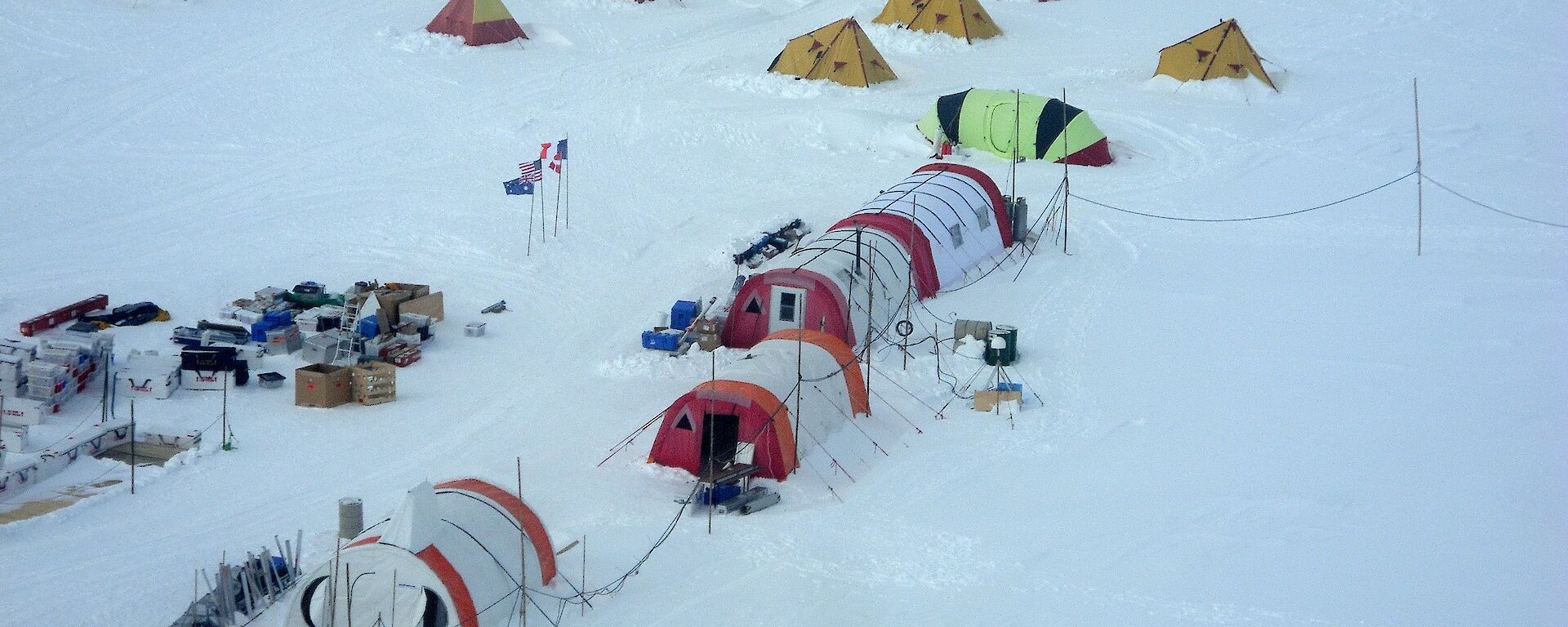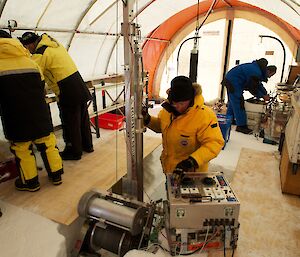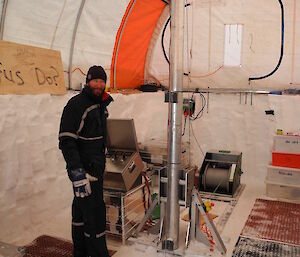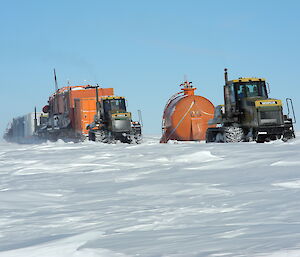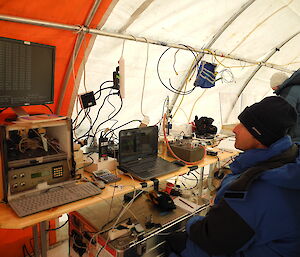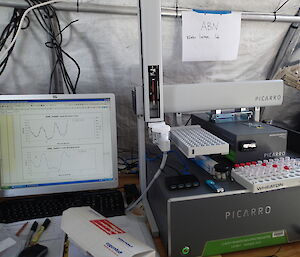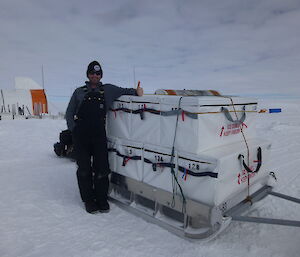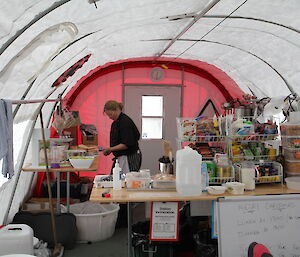An international contingent of polar scientists is set to unlock a 2000 year climate history from Antarctic ice cores drilled from the heart of the Australian Antarctic Territory over summer.
About two tonnes of ice core sections drilled at Aurora Basin, 500 kilometres inland of Australia’s Casey station, is being distributed to Australian and international ice core laboratories.
The cores will be analysed for atmospheric gases, particles and other chemical elements that were trapped in snow as it fell and compacted to form ice.
Australian Antarctic Division glaciologist and Leader of the Aurora Basin project, Dr Mark Curran, said the cores will help fill a gap in the science community’s knowledge of climate records.
“Using a variety of scientific tests on each core, we’ll be able to obtain information about the temperature under which the ice formed, storm events, solar and volcanic activity, sea ice extent, and the concentration of different atmospheric gases over time,” Dr Mark Curran said.
The team used a Danish Hans Tausen drill to extract the main 303 metre long ice core, which will provide annual climate records for the past 2000 years.
“There are only a handful of records with comparable resolution that extend to 2000 years from the whole of Antarctica, and this is only the second one from this sector of East Antarctica.”
Additionally two smaller drills were used to extract 116 and 103 metre cores, spanning the past 800 to 1000 years.
“These shorter cores will provide extra ice for large volume chemical analyses,” Dr Curran said.
All the ice cores were drilled in one metre sections over the five week field project.
A highlight of the drilling team’s work was obtaining a 300 year temperature record from the main ice core using a field-based ‘laser spectrometer’.
“The spectrometer allowed us to see the summer and winter snowfall variations in the ice. This detailed seasonal information is exactly what we wanted,” he said.
The project paves the way for a more ambitious drilling expedition to collect a one million year old ice core in the future.
“Such an ice core would help us understand what caused a dramatic shift in the frequency of ice ages about 800 000 years ago, and further understand the role of carbon dioxide in climate change,” Dr Curran said.
The Aurora Basin project involves 15 partner organisations contributing from six nations: Australia, China, Denmark, France Germany and the United States of America.

